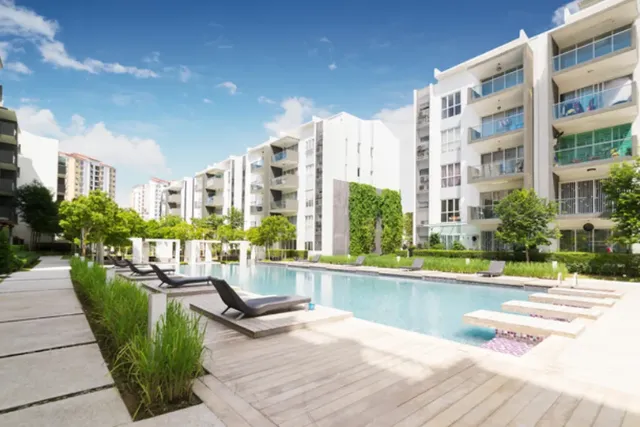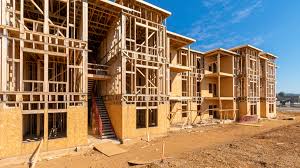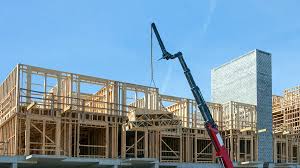
The multifamily housing sector has notched its busiest year for new completions since the mid-1980s, underlining how developers have responded to years of strong demand for rental apartments — but also raising questions about how quickly markets can absorb so much new supply.

According to a fresh analysis by the National Association of Home Builders (NAHB), the U.S. saw 608,000 multifamily units completed in 2024, the largest annual tally since 1986. This milestone comes after more than a decade of sustained renter demand, cheap financing during the pandemic era, and a surge in population growth in key Sun Belt metros.
The data, based on the Census Bureau’s annual Survey of Construction, shows how developers have increasingly focused on high-density urban living. Over half — 54% — of last year’s completions were buildings with 50 or more units, continuing an eight-year streak where large projects dominate. By contrast, in 2004, smaller buildings were more common; for example, mid-sized projects with 10 to 19 units accounted for 24% of completions in 2004 but made up only 4% last year — a dramatic drop that shows how the industry has shifted toward big, amenity-rich communities.
The overwhelming share — 95% — of these new buildings are intended for rent rather than sale, the NAHB found. Among rentals, the tilt toward high-density buildings is also clear: 55% of new rental completions were in large-scale developments, compared to just 25% twenty years ago.
Regionally, the South remains the engine room for multifamily building, driven by rapid population growth, job gains, and investor interest. Southern states accounted for 48% of total multifamily completions in 2024, with 292,000 units delivered. The West followed with 163,000 completions (27%), while the Midwest delivered 87,000 units (14%) and the Northeast brought up the rear with 68,000 units (11%).
The regional breakdown also highlights important trends in building type. “Completions in the South were weighted toward low-medium density buildings — a reverse on the overall trend — while high-density buildings in the Midwest and the Northeast were nearly double the amount of low-medium density completions,” the NAHB analysis noted.
While this fresh supply has helped ease pressure on renters in overheated markets, it has also triggered rent declines in some cities that saw big building booms. Austin, Texas, has been a high-profile example of this dynamic. According to Yardi Matrix, roughly 23,000 units have hit the Austin-Round Rock market over the last two years alone, pushing average rents down by more than $200 from their peak.

However, the tide may be turning — albeit slowly. Yardi Matrix’s latest National Multifamily Report shows that Sun Belt cities known for huge construction pipelines — Austin, Dallas, Denver, and San Francisco — are starting to see rents stabilize or inch upward again. Austin, for instance, which added 9.1% more supply this year alone, saw average rents tick up 0.2% in May, or $3.
For some investors, this supply glut is creating rare buying opportunities. “You’re starting to see [distressed buying opportunities] in the greater Phoenix metro in Arizona,” said Jim Brooks, president of Los Angeles-based BH Properties, speaking to Multifamily Dive. “You’re starting to see a little bit of that in Austin — markets where you had this huge supply.”
This flood of completions has already reshaped the investment landscape. Some landlords are offering aggressive leasing concessions, like free months of rent, waived fees, or luxury upgrades to attract tenants in oversupplied areas. Developers with loans coming due may be forced to refinance at higher interest rates, increasing the likelihood of discounted sales.
Despite the near-term softness, many industry analysts point to strong fundamentals in the long run: the U.S. continues to face a housing shortage overall, and demand for modern rental units remains robust, especially in walkable, amenity-rich urban hubs. Some experts expect that the current wave of completions could temporarily overshoot demand in certain metros but will help close the housing gap in the broader market.
Going forward, developers are expected to pull back somewhat on new starts as elevated borrowing costs, tighter lending standards, and higher construction expenses make new projects harder to pencil out. This could allow existing supply to be absorbed more fully over the next 12–24 months — potentially setting the stage for a more balanced rental market later this decade.
While the U.S. apartment sector just delivered its largest wave of new units in nearly four decades, the real test will be how quickly the market can absorb the supply without triggering prolonged rent softness — and whether today’s wave of completions fuels tomorrow’s investment deals.
Originally reported by Leslie Shaver in Construction Dive.